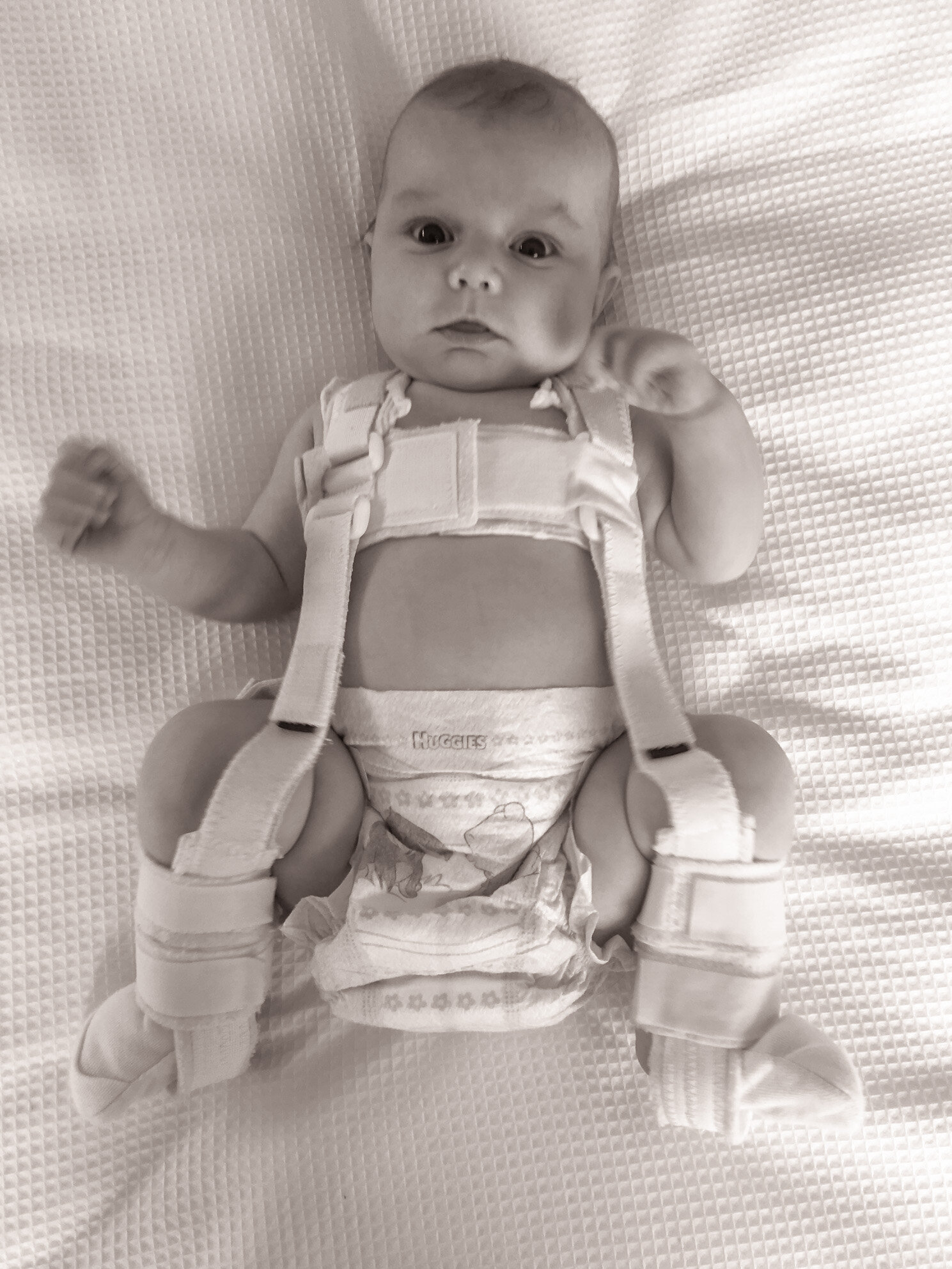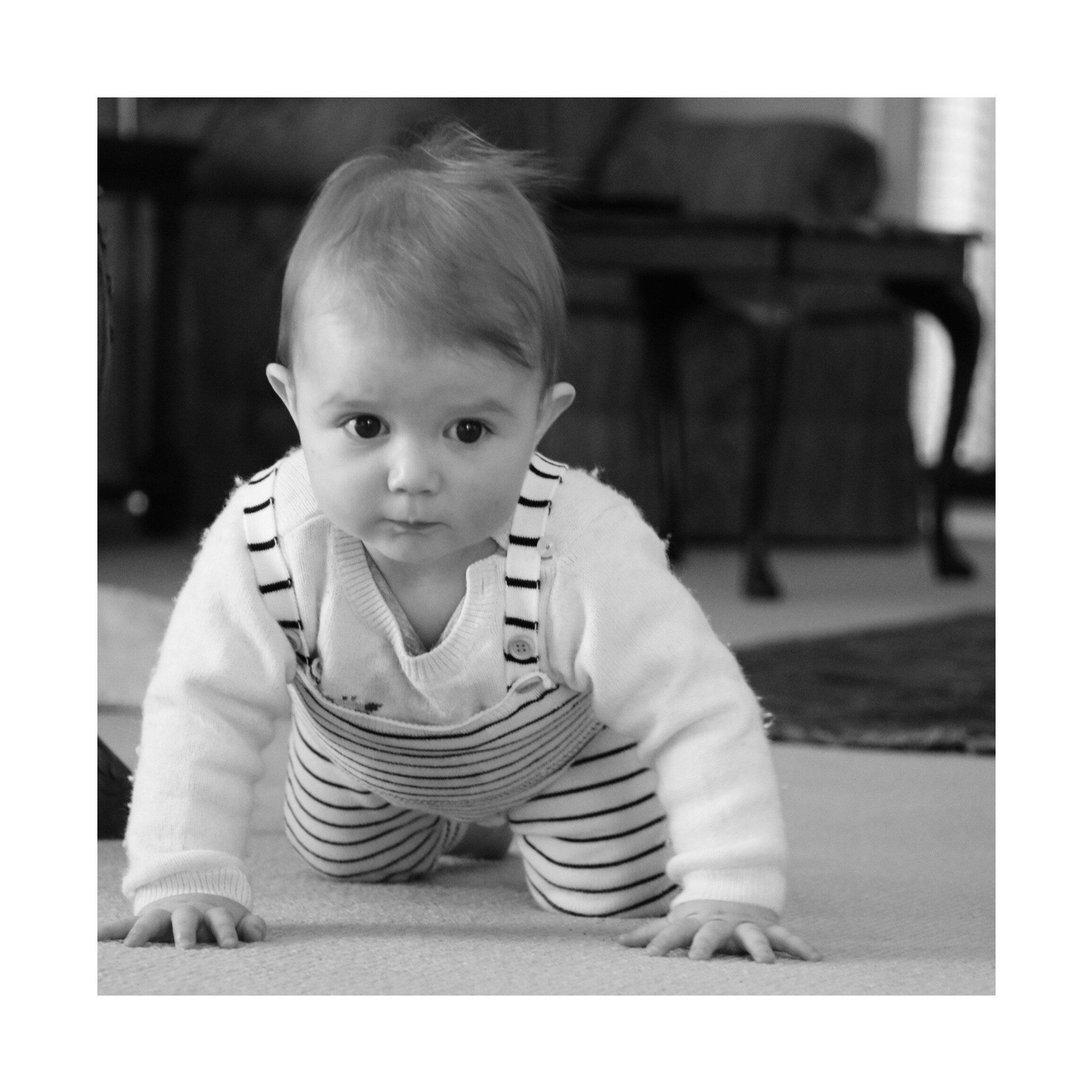My Strong Little Journey: Emma & Georgina- Hip Dysplasia
INTRODUCING THE NEXT STORY FROM MY NEW PROJECT:
‘MY STRONG LITTLE JOURNEY’
I’ve asked real Mums and Dads, with real experiences of paediatric physiotherapy to share their story with me (and you); to let their guard down, and tell it how it really is on the other side of the fence. What it feels like to be the “parent of the patient”.
Sometimes the journey will be nice and smooth and simple and all the loose ends can get tied off nicely. There is a beginning and an end. A cure even.
But more often than not, having a child with a health condition can be really complex and messy. It’s a long, winding road. It can be tough on families. I’ve asked these parents to tell their story how they would’ve liked to have told their own friends and family. What they would have liked to hear themselves in the early days.
What I do know is this; these stories, no matter how small, are going to be incredibly helpful and reassuring for Mums and Dads going through similar experiences themselves, and I am sure they will also be really valuable for therapists too. Giving us the opportunity to walk in their shoes, even if just for a moment, is a wonderful gift these parents are giving.
So thank you for sharing your story today Emma.
LET’S HEAR ABOUT HER Daughter Georgina’s STRONG LITTLE JOURNEY AND HER FAMILY’S EXPERIENCE WITH Hip Dysplasia, picked up a little later, at 6 weeks.
My name is Emma & I live in Canberra, with my husband Lachlan & two daughters Alice (3) & Georgina (9months).
Emma and her little Georgina
My feeling about becoming a mum was EXCITEMENT! I had enjoyable, healthy pregnancies & was looking forward to becoming a mum for the 2nd time. I had undergone huge changes within myself over the recent years & knew that it was all going to shift again.
In my last trimester of pregnancy, our baby spent most of her time in a frank breech position with her toes to her forehead. My doctor explained she would prefer for me to have a C-section if the baby remained breech. I looked into vaginal breech deliveries, spinning babies & acupuncture & thankfully the baby turned at 35 weeks.
I felt that aspect of pregnancy was behind us – I didn’t really under stand then what the impact would be.
The day Georgina was born, I woke up at 2am with light contractions. We went in to hospital at about 10am. The midwives were amazing, I loved the hands off approach & I just let my body take over. The feeling of reaching down to pick my baby up, look at her & be the first one to touch her was honestly the best feeling ever. I was PROUD of what my body & mind had been able to do & thankful to those midwives for their skills and care. The paediatrician came to check Georgina over that night & everything was fine.
Our hearts swelled as we got going with life as a family of 4. I soaked up every minute, even those night feeds! I tried not to wish the days away.
The hospital paediatrician ordered a hip ultrasound for 6 weeks because Georgina had been breech. Her hip checks at Day 0, 3, & 9 were all normal. On the day we went for the ultrasound, I felt like it was going to just tick a box, however I knew there was something wrong when the sonographer went to get someone to check the ultrasound, & then another.
A doctor walked into the room & told me the baby would need a hip brace. I was just in shock.
The paediatrician called me later that day & told she was referring us for a Pavlik Harness fitting with a physiotherapist. We were told that it had to go on as soon as possible, & we could not waste anytime.
Georgina in her Pavlik harness
The Pavlik harness was fitted by a physio and I dressed our 6-week-old baby in size 0 clothes. It was to stay on 24 hours a day and we were told to expect it to be on for at least 12 weeks. My mind raced forward as I did the maths and calculated that my baby would spend her first Christmas and hot summer in the harness. I was heartbroken.
There were some big feelings in our house that week. I stumbled upon a Facebook Group Hip Dysplasia Australia and I devoured the stories and pictures of families on their hip journeys. I read up as much as I could and decided to make an appointment with our GP. When she examined Georgina’s hips, the left one could be dislocated. We were referred to an orthopaedic paediatric specialist 90mins away and thankfully got an appointment 2 days later.
We were to keep the harness on 24 hours a day, would have another ultrasound in 5 weeks, and referred to our local hospital for weekly baths & harness checks with the paediatric Physio department.
Developmental hip dysplasia is a condition that is more present in females, first babies and those who have had a breech presentation. Simply, the ball & socket in the hips do not sit snuggly together. Sometimes it is present at birth & in some cases can develop during the first year or so. When the ball of the thighbone doesn’t sit deeply in the socket, it can dislocate. If left untreated it can lead to osteoarthritis as early as adolescence & hip problems in later life.
The earlier hip dysplasia is diagnosed, the simpler & shorter treatment is. If diagnosed when the baby is a newborn, more often than not, a brace will be the only treatment required. If it is diagnosed later, and the hip is fully dislocated, invasive surgery and plaster casting is required to realign the hip so it can continue to grow normally.
Tummy time was easier for Georgina over a pillow with the hip brace on.
The first time we met our new Physio, I knew we had the right person. We talked about all kinds of things from breastfeeding & carrying positions, tummy time, how to fit her in her capsule, night positioning & swaddling.
Our new routine involved weekly baths at the hospital with our physio. I relished that time when I could give Georgina a cuddle & feel her beautiful skin without the harness. Our physio had a lovely way of giving us privacy during the baths. She would sit quietly doing work with her back turned, which was a lovely approach. She didn’t hover & never did we feel rushed.
She gave us great tips to help with tummy time. Georgina had always loved being on her tummy but with the brace was on, she hated it. We tried it propped up on cushions & it helped.
Fast-forward 5 weeks & the 2nd ultrasound was a very different experience. The radiologist was very skilled & declared Georgina had perfect hips! I couldn’t quite believe my ears! Georgina’s hip angles had improved & we could wean from wearing the harness over 2 weeks to nights only, & then off completely!
The day the brace was off she started rolling again. She was 12 weeks old.
Looking back, I did lots of crying in that 1st week. I grieved I wouldn’t be able to snuggle closely with my newborn for those last sleepy weeks. I didn’t know if I would be able to breastfeed. I wondered what people would think of a baby in a harness.
Through social media I found 3 families we knew were being treated for DDH at the same time. 1 friend sent me a huge bundle of clothes & a special beanbag & it was gestures of kindness like this I will remember.
Georgina is now 10 mths & crawling, pulling to stand, cruising along furniture, waving & clapping. She is inquisitive & chatty and it is a delight watching her grow and develop. She will require yearly x-rays throughout her childhood to make sure her hips are developing as they should be.
Georgina today.
My advice to families going through DDH is to know you are not alone & there are some great online resources to help you feel connected. Babies are resilient & adapt to treatment so well. Getting your head around the diagnosis & 1st weeks is the hardest part.
To all the healthcare providers: please take time & care with families during DDH diagnosis & treatment. A newborn going into a harness is a BIG DEAL. An older baby requiring surgery & casting is a BIG DEAL & while bubbas are so resilient, their parents need a lot of TLC.
NOTE FROM ALANA
I want to extend my thanks once again to to Emma, for opening up and telling us her story of being Mum to Georgina. I hope with all my heart it resonates and is helpful to other Mums and Dads going through a similar experience.
I think we as health professionals can also learn a lesson from this. Over time, for us, some conditions become ‘run of the mill’. They’re not a big deal to us because we see it every week. Sometimes we forget these parents are going through this experience without any prior knowledge, they are scared, and like Emma said, it can be a really BIG DEAL for them. We need to remember this as therapists, and put ourselves in the parents shoes every single time.
Do you have a story you would like to share? Please get in touch. I would so love to hear from you.



